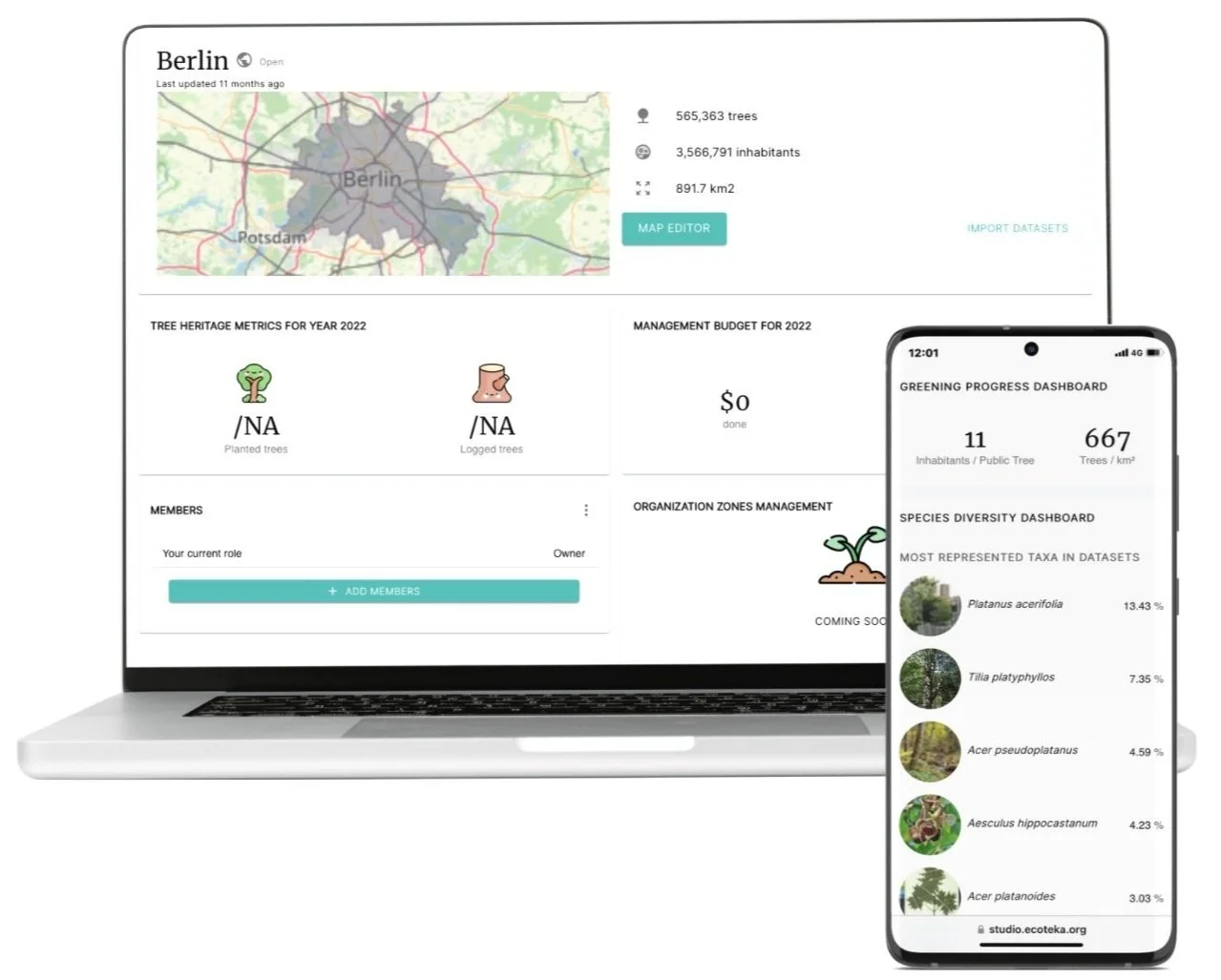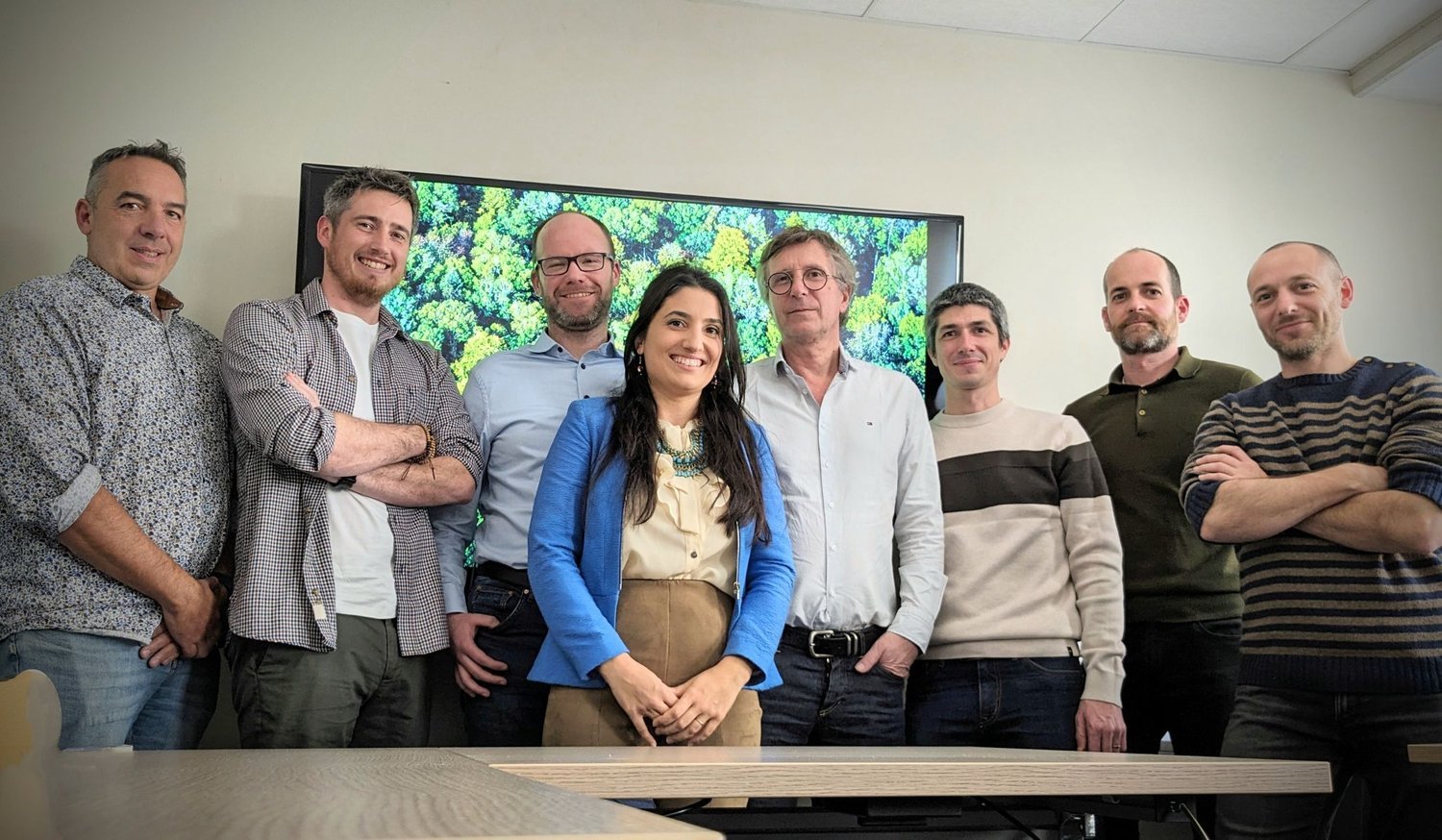Urban forestry management plan
To maintain a healthy urban forest, a successful management plan is essential. This article outlines the steps necessary to execute such an ambitious project. The Urban Forestry Management Plan offers guidance for maintaining and enhancing the urban forest, as well as making recommendations to improve the city's green spaces both now and in the future.
Step 1 : The pre-planning phase
The work plan
This part is crucial as it forms the basis of your entire plan and dictates its success. It's during this stage that you ask yourself all the pertinent questions necessary to execute the project effectively.
1) Why do you need an urban forestry management plan ?
To begin with, it's essential to ask yourself why. What's the purpose behind creating a management plan for your urban forest?
There are several reasons for this, such as:
- Maintaining the existing tree inventory
- Implementing a plan for more effective allocation of funds and personnel
- Enhancing the benefits of a well-managed urban forest through updated management strategies
- Accessing available grants designated for this purpose
- Adapting to changes in personnel or administration
- (…)
2) Who will participate in this project?
The next step involves determining who will be involved. Who will take charge of the development, and who will participate in the implementation? This phase brings together various stakeholders to collaboratively shape the final vision of the plan. Elected officials, urban foresters, landscapers, citizens, and others must engage in:
- Developing a shared vision
- Identifying community needs
- Establishing the project timeline
3) Where and when ?
During the pre-planning stage, the planning, management, and monitoring timelines are established to determine the deadlines: 5 years? 10 years or more?
It's also crucial to define the geographical scope and the areas to be covered by the plan. Which trees will be included in your plan? Will it encompass all urban trees in both public and private areas, or only public trees?
Step 2: Plan development
Urban forest management plan
1) Establishing a shared vision
As mentioned earlier, bringing the community together is crucial to develop a plan that meets the needs of all stakeholders. During this stage, various actors collaborate to collectively envision and bring to life their vision of the urban forest.
2) Conducting an inventory
Conducting an inventory of the urban tree population enables green space managers to assess the existing trees within the city. It provides insight into various characteristics of urban trees, including the diversity of species present. This information is vital for engaging with elected officials and citizens, thereby facilitating more effective planning for future developments.
Overall assessment
First and foremost, it's crucial to conduct an inventory of the current situation to identify areas for improvement. This involves reviewing past management practices to ensure a strong starting point moving forward.
Environmental assessment
Trees are living organisms, so it's essential to assess the surrounding environment and consider their management holistically. This involves identifying all environmental factors that can influence species selection, maintenance, and management.
Therefore, we will assess:
- Climate: A critical factor in a tree's life, climate must be considered in your management plan. Climate variations across seasons and years can impact the health of your urban forest if the species within it are not suited to local conditions. Drought, flooding, very high, or very low temperatures are all parameters to consider when selecting species.
- Soil condition: Evaluating the soils within the geographic area of your plan is necessary to identify strengths and weaknesses that may hinder the optimal development of your urban forest. Soil parameters to consider for effective management include texture, water retention capacity, salinity, depth, and water table level.
- Invasive species: The presence of invasive animal and plant species can threaten the entire management of your urban forest. Their introduction likely caused significant disruption to current tree development and will continue to evolve. Identifying invasive organisms and their locations from the outset is essential to make informed decisions. Your management plan is a robust tool to aid in controlling the spread of these invasive species.
Tree inventory
There are two primary methods for conducting an inventory of your tree population: station-based inventory or tree-by-tree inventory.
Station-based inventory: This approach involves creating stations that list information about groups of trees of the same species or under the same management. While this method saves time, it may result in some loss of detail compared to the tree-by-tree inventory.
Tree-by-tree inventory: The tree-by-tree inventory entails collecting detailed information about each tree and individually mapping their locations. Although this type of inventory may require more initial investment, it facilitates more comprehensive long-term management.
The quantitative inventory: It provides general information about your tree population. This inventory allows you to reference information such as:
- The localisation (latitude, longitude, adress)
- Dimensions (height, dbh)
The qualitative inventory: This inventory also takes into account some information such as:
- The genera
- The species
- The varieties
- The common names
- Maintenance history
- Replanting
- Health
- Environment around the tree (urban furniture, infrastructure above and below ground,…)
Picture : Manon Frédout
Gathering Management-Related Information
When developing your plan, it's crucial to identify all stakeholders responsible for various aspects of the urban forest. Who oversees maintaining existing trees and removing those that are diseased or nearing the end of their lifespan? Which department manages the hazards associated with tree falls or dieback? How are these activities coordinated to advance the management plan? Addressing these questions upfront, particularly during job transitions, helps avoid unpleasant surprises due to misunderstandings.
Additionally, your plan should incorporate research on regulations and existing plans within the chosen area. Previous staff plans can serve as supportive elements for an effective tree policy in your municipality.
3) Developing a Strategy
Once the inventory part has been completed, you will be able to analyze trends and understand the origin of certain malfunctions related to the previous management plan. Some trees do not survive? The urban forest was not developed? Perhaps it is due to the presence of unidentified parasites, having proliferated within your tree heritage or to tree species not adapted to the urban environment of your city.
Now that you have identified all the issues, you can draw up a list of initiatives to implement.
Examples :
- Enhancing Control over Invasive and Diseased Species
- Diversify tree species and ages to foster a more resilient forest
- Improve coordination among various departments
- Engage citizens in program initiatives
- Allocate a budget for the entire program
With these steps in place, you can now establish goals, sub-goals, and the necessary actions to achieve them.
Long term management
Managing an urban forest established over an extended period can be unpredictable. Therefore, it's crucial to remain agile and adopt adaptive management practices.
Certain parameters initially planned may change, while others may not have been considered. This highlights the importance of flexibility.
With climate change leading to increasingly frequent and intense events, such as extreme weather, continuous monitoring becomes essential to address these disturbances.
Inventory and management tree software
Natural Solutions is collaborating on the development of the Ecoteka application, aimed at facilitating the inventory of urban trees. This solution, which is Open Source, will enhance Open Data resources related to urban trees. To achieve this, it utilizes a tree attribute data schema that has been developed in collaboration with tree professionals and open data experts.
With our solution, you can do the following with the web tool:
- Import georeferenced data to create a map of your tree inventory
- Add new trees and input relevant data following the urban tree data schema
- Track the history of actions performed on individual trees and get an overview of future interventions
- Access an annual dashboard showing tree planting, cost management, etc.
At Natural Solutions, we provide software solutions for biodiversity.
Do you want to know more about our solution?
Please reach out to schedule a meeting.















